
An aerial drone photo taken on Sept. 25, 2024 shows China's Five-hundred-meter Aperture Spherical Radio Telescope (FAST) under maintenance in southwest China's Guizhou Province. The construction of the Core Array of China's Five-hundred-meter Aperture Spherical Radio Telescope (FAST) started Wednesday, highlighting China's growing potential in global radio astronomy research. (Xinhua/Liu Xu)
GUIYANG, Sept. 25 (Xinhua) -- The construction of the Core Array of China's Five-hundred-meter Aperture Spherical Radio Telescope (FAST) started Wednesday, highlighting China's growing potential in global radio astronomy research.
As a proposed extension of FAST, the world's largest single-dish radio telescope, the Core Array integrates 24 secondary 40-meter antennas implanted within 5 kilometers of the FAST site, said Jiang Peng, deputy director of the National Astronomical Observatories under the Chinese Academy of Sciences (CAS).
The Chinese-designed array will combine the unprecedented sensitivity of FAST with a high angular resolution, thereby exceeding the capabilities at similar frequencies of next-generation arrays in the world.
The FAST Core Array is estimated to be completed and put into operation in 2027.
According to a study conducted by CAS, the Core Array will be equipped with advanced devices to improve the survey efficiency of FAST, whose broad frequency coverage and large field of view (FOV) will be essential to study transient cosmic phenomena such as fast radio bursts and gravitational wave events; conduct surveys and resolve structures in neutral hydrogen galaxies; monitor or detect pulsars; and investigate exoplanetary systems.
Jiang said that once operational, the FAST Core Array could provide more possibilities for global radio astronomy research, owing to a wide range of potential scientific applications from cosmology to exoplanet science.
Wednesday also marks the eighth anniversary of the launch of FAST. In less than a decade, FAST has already significantly expanded its astronomical observation capability, and the FAST Core Array is set to enhance its observational capabilities further.
Jiang said observations made solely with FAST are like using a pencil to draw a sketch, while the FAST Core Array is akin to capturing the night sky with a digital camera.
To date, FAST has identified more than 900 new pulsars since its launch in 2016. The number of new pulsars discovered by FAST is more than three times the total number of pulsars found by foreign telescopes during the same period.
FAST started formal operations in January 2020 and was officially opened to the world in March 2021. The telescope provides astronomers around the globe with a powerful tool to uncover the mysteries and evolution of the universe.
Since its formal opening to the global scientific community on March 31, 2021, FAST has facilitated over 900 hours of observations for research teams from 15 countries, including the United States, the Netherlands, and Australia, covering various scientific objectives.
On April 6 this year, FAST reopened applications for observation projects for the 2024-2025 season, offering 1,600 hours of telescope time for freely applied projects.
British astronomer Ralph Eatough said that opening up FAST to the world means that astronomers can now perform experiments that were previously not possible due to insufficient telescope sensitivity, with a prime example of this being the potential to detect pulsars located in external galaxies.
Chen Xianhui, an academician at CAS, said, "FAST is helping mankind explore the origins, evolution, and structure of the universe, providing crucial observational data for understanding pressing scientific questions, while also serving as an important platform for international scientific exchange and collaboration." ■
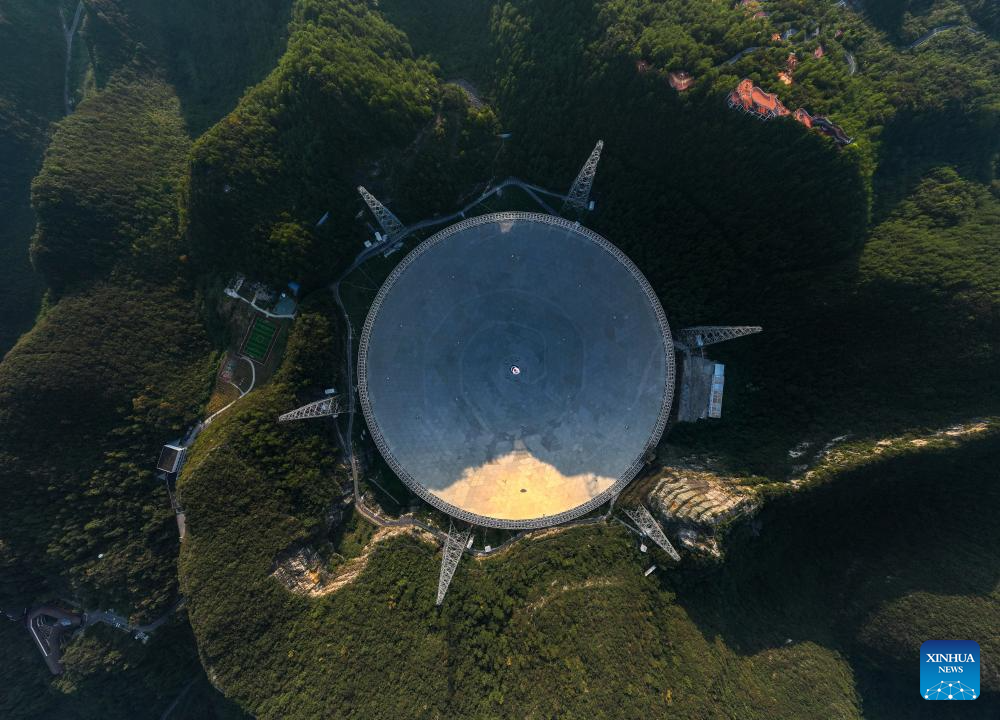
An aerial drone photo taken on Sept. 25, 2024 shows China's Five-hundred-meter Aperture Spherical Radio Telescope (FAST) under maintenance in southwest China's Guizhou Province. Wednesday marks the eighth anniversary of the launch of China's Five-hundred-meter Aperture Spherical Radio Telescope (FAST). On the same day, the construction of the Core Array of FAST started, highlighting China's growing potential in global radio astronomy research.(Xinhua/Liu Xu)
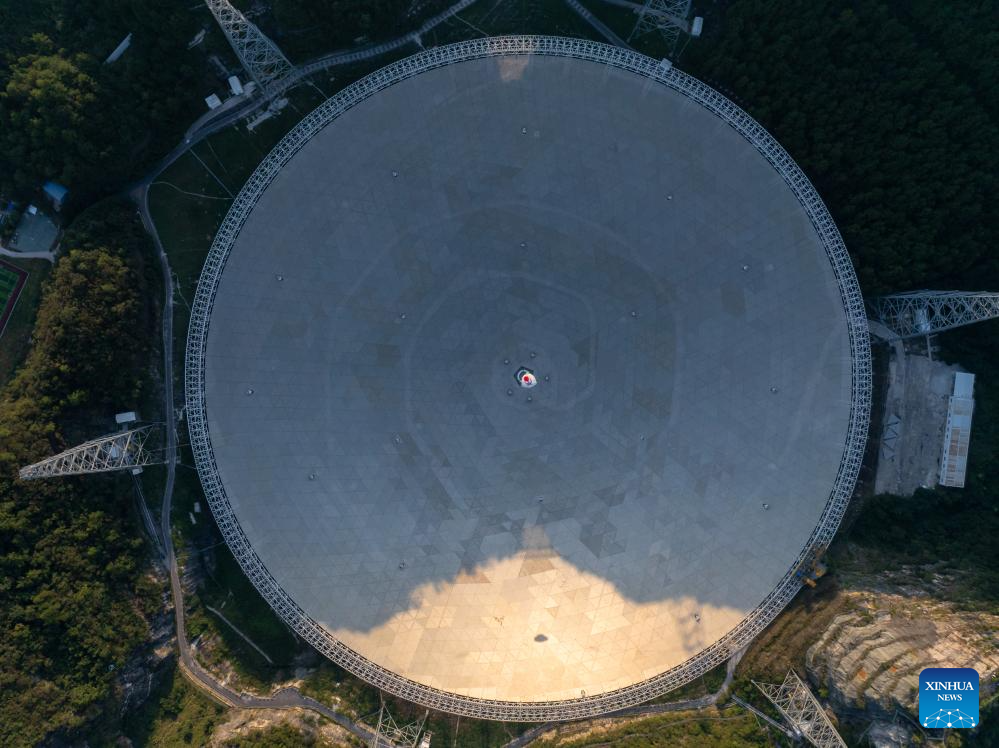
An aerial drone photo taken on Sept. 25, 2024 shows China's Five-hundred-meter Aperture Spherical Radio Telescope (FAST) under maintenance in southwest China's Guizhou Province. Wednesday marks the eighth anniversary of the launch of China's Five-hundred-meter Aperture Spherical Radio Telescope (FAST). On the same day, the construction of the Core Array of FAST started, highlighting China's growing potential in global radio astronomy research.(Xinhua/Liu Xu)
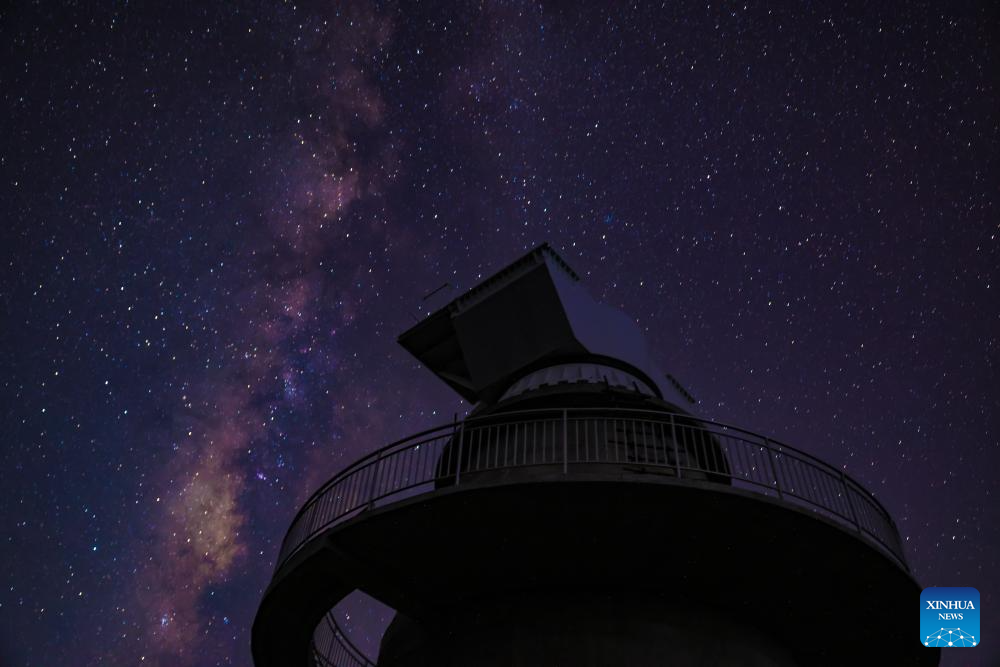
This photo taken on Sept. 25, 2024 shows the newly installed first test prototype of the Core Array of China's Five-hundred-meter Aperture Spherical Radio Telescope under the starry sky in southwest China's Guizhou Province. Wednesday marks the eighth anniversary of the launch of China's Five-hundred-meter Aperture Spherical Radio Telescope (FAST). On the same day, the construction of the Core Array of FAST started, highlighting China's growing potential in global radio astronomy research.(Xinhua/Liu Xu)

An aerial drone photo taken on Sept. 25, 2024 shows China's Five-hundred-meter Aperture Spherical Radio Telescope (FAST) under maintenance in southwest China's Guizhou Province. Wednesday marks the eighth anniversary of the launch of China's Five-hundred-meter Aperture Spherical Radio Telescope (FAST). On the same day, the construction of the Core Array of FAST started, highlighting China's growing potential in global radio astronomy research.(Xinhua/Liu Xu)
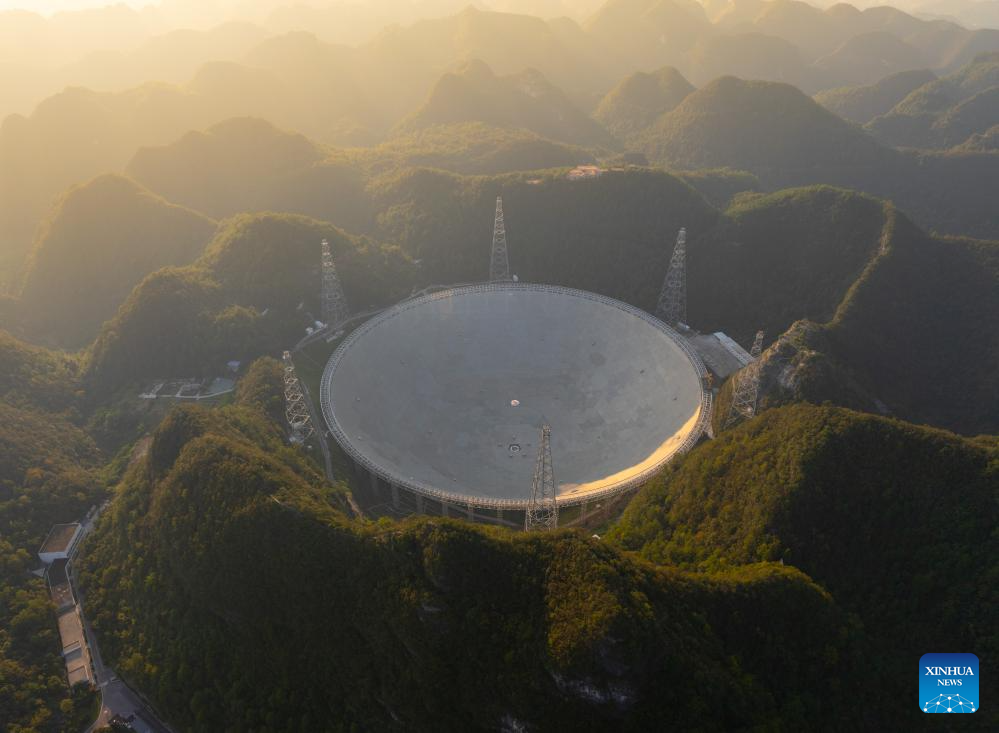
An aerial drone photo taken on Sept. 25, 2024 shows China's Five-hundred-meter Aperture Spherical Radio Telescope (FAST) under maintenance in southwest China's Guizhou Province. Wednesday marks the eighth anniversary of the launch of China's Five-hundred-meter Aperture Spherical Radio Telescope (FAST). On the same day, the construction of the Core Array of FAST started, highlighting China's growing potential in global radio astronomy research.(Xinhua/Liu Xu)
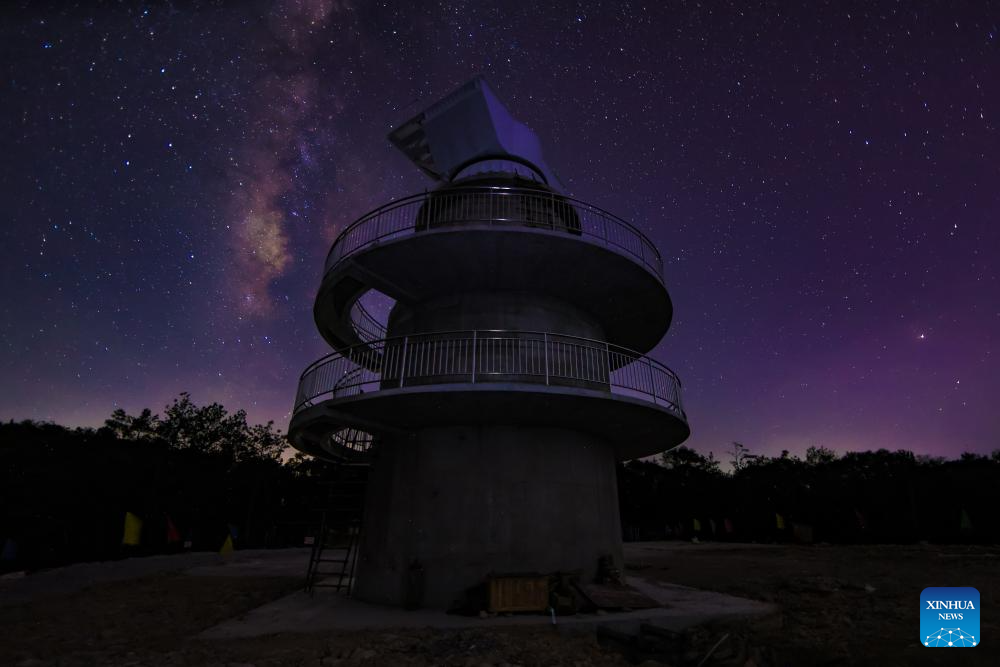
This photo taken on Sept. 25, 2024 shows the newly installed first test prototype of the Core Array of China's Five-hundred-meter Aperture Spherical Radio Telescope under the starry sky in southwest China's Guizhou Province. Wednesday marks the eighth anniversary of the launch of China's Five-hundred-meter Aperture Spherical Radio Telescope (FAST). On the same day, the construction of the Core Array of FAST started, highlighting China's growing potential in global radio astronomy research.(Xinhua/Liu Xu)
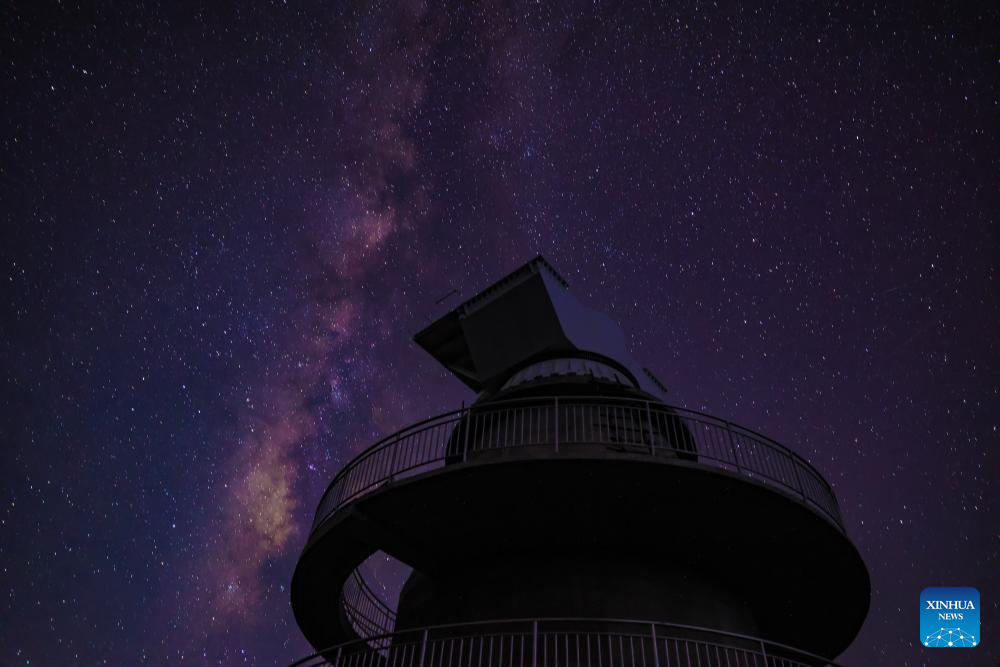
This photo taken on Sept. 25, 2024 shows the newly installed first test prototype of the Core Array of China's Five-hundred-meter Aperture Spherical Radio Telescope under the starry sky in southwest China's Guizhou Province. Wednesday marks the eighth anniversary of the launch of China's Five-hundred-meter Aperture Spherical Radio Telescope (FAST). On the same day, the construction of the Core Array of FAST started, highlighting China's growing potential in global radio astronomy research.(Xinhua/Liu Xu)

An aerial drone photo taken on Sept. 25, 2024 shows China's Five-hundred-meter Aperture Spherical Radio Telescope (FAST) under maintenance in southwest China's Guizhou Province. Wednesday marks the eighth anniversary of the launch of China's Five-hundred-meter Aperture Spherical Radio Telescope (FAST). On the same day, the construction of the Core Array of FAST started, highlighting China's growing potential in global radio astronomy research.(Xinhua/Liu Xu)
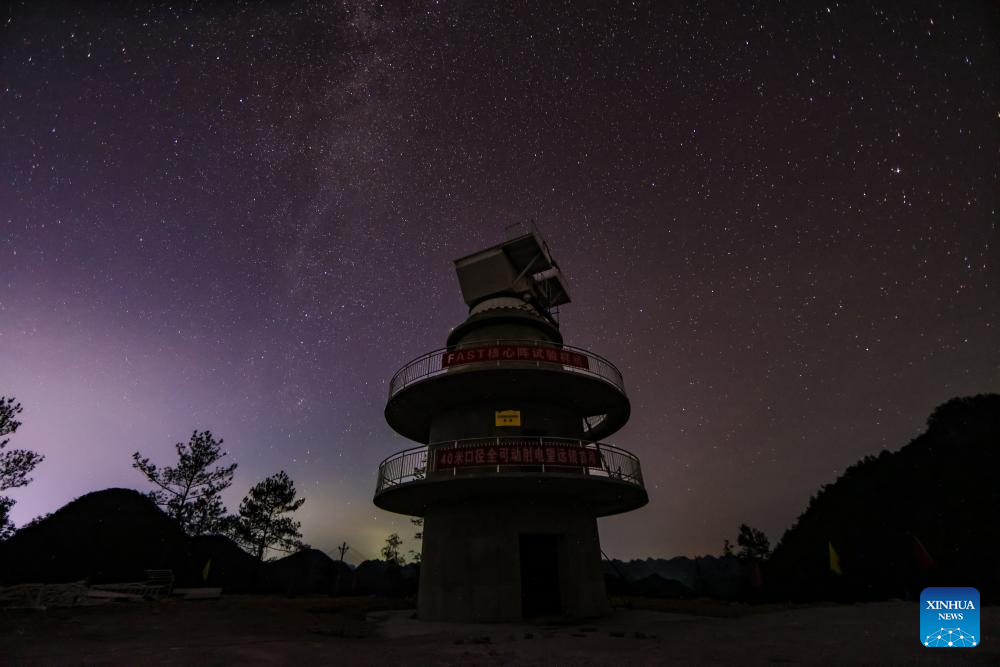
This photo taken on Sept. 25, 2024 shows the newly installed first test prototype of the Core Array of China's Five-hundred-meter Aperture Spherical Radio Telescope under the starry sky in southwest China's Guizhou Province. Wednesday marks the eighth anniversary of the launch of China's Five-hundred-meter Aperture Spherical Radio Telescope (FAST). On the same day, the construction of the Core Array of FAST started, highlighting China's growing potential in global radio astronomy research.(Xinhua/Liu Xu)
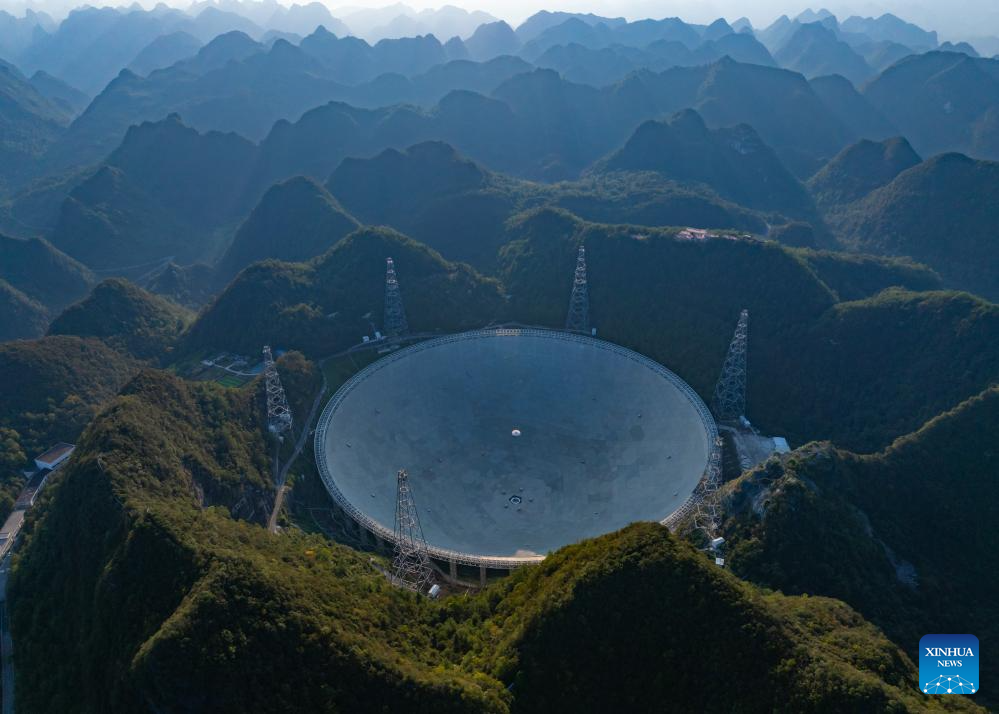
An aerial drone photo taken on Sept. 25, 2024 shows China's Five-hundred-meter Aperture Spherical Radio Telescope (FAST) under maintenance in southwest China's Guizhou Province. Wednesday marks the eighth anniversary of the launch of China's Five-hundred-meter Aperture Spherical Radio Telescope (FAST). On the same day, the construction of the Core Array of FAST started, highlighting China's growing potential in global radio astronomy research.(Xinhua/Liu Xu)

An aerial drone photo taken on Sept. 25, 2024 shows China's Five-hundred-meter Aperture Spherical Radio Telescope (FAST) under maintenance in southwest China's Guizhou Province. Wednesday marks the eighth anniversary of the launch of China's Five-hundred-meter Aperture Spherical Radio Telescope (FAST). On the same day, the construction of the Core Array of FAST started, highlighting China's growing potential in global radio astronomy research.(Xinhua/Liu Xu)

An aerial drone photo taken on Sept. 25, 2024 shows China's Five-hundred-meter Aperture Spherical Radio Telescope (FAST) under maintenance in southwest China's Guizhou Province. Wednesday marks the eighth anniversary of the launch of China's Five-hundred-meter Aperture Spherical Radio Telescope (FAST). On the same day, the construction of the Core Array of FAST started, highlighting China's growing potential in global radio astronomy research.(Xinhua/Liu Xu)



